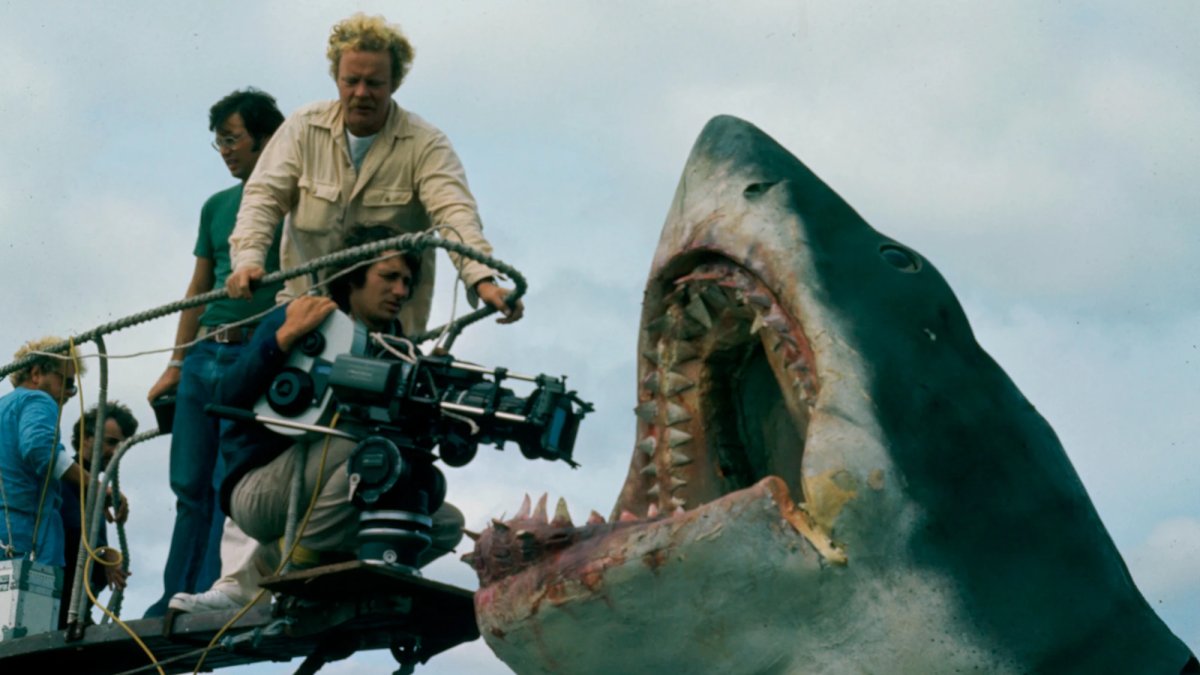On June 20, 1975, “Jaws” was unleashed upon moviegoers. The film was an overnight success.
Within two months it was the highest grossing motion picture of all time (surpassing “The Godfather” and “The Exorcist” for the top spot) and became the first movie ever to top $100 million at the domestic box office. It won three Academy Awards and invented the summer blockbuster. By every metric “Jaws” changed Hollywood forever.
But its real legacy may be with the sharks themselves.
“‘Jaws’ obviously was kind of one of those movies that kind of redefined how people think about sharks and interact with the ocean. At the time it caused a lot of fear. There were a lot of people scared of sharks,” says Jake Elstner, a PhD student at Scripps Institution of Oceanography at UC San Diego.
Indeed, the movie fueled fears of the then unknown creatures, prompting overfishing as people thought they should get the sharks before the sharks got them. By the early 1990’s the National Oceanic and Atmospheric Administration prohibited fishing for great whites in all U.S. waters, allowing the pendulum to swing back in the opposite direction.
“At that time, we knew virtually nothing about a lot of these shark species and a lot of these populations. So, in a lot of ways, ‘Jaws’ caused people to be afraid of sharks, but it also really piqued people’s interest. And since then, that’s ultimately funded so much research on not only white sharks, but tons of other species,” says Elstner.
Elstner works closely with the California State University-Long Beach Shark Lab. Together they’ve been instrumental in helping us earn a better understanding of these animals.
“Most of our research is motivated by answering a couple different fundamental questions,” says Elstner. “Why are these sharks coming to these particular areas? What are they actually doing while they’re in these nursery habitats? We’re defining key nursery behaviors, how long they hang around and how long they stay.”
Beyond the sharks themselves, what they scientists are really looking at is the shark’s role in the entire aquatic ecosystem. As it turns out, the health of these animals can have a real impact on how we live our daily lives on land.
“Their role in the ocean ecosystem is not something that’s really explored very well,” says Brent Fish, an aquarist at Birch Aquarium. “Whether it’s your top predators or something like a whale shark, where they eat all the little plankton. So, they play a lot of different roles. They’re very important for maintaining healthy ecosystems in our ocean waters.”
Healthy ecosystems mean healthy fish, and humans eat A LOT of fish so researchers say understanding as much as we can about the top of the food chain ultimately means good things for all of humanity.
While the movie taps into a fundamental fear, the thought that something deadly could be lurking and we’ll never know it’s there, the experts say we should definitely not be afraid of sharks.
“We always like to say sharks, particularly white sharks, they’re very large ocean predators that we need to respect. But at the same time, a lot of our work is showing that these animals are not out to get us,” says Elstner. “They’re coming to these nursery habitats in Southern California just doing their thing and the sharks don’t really care about people. They’re interested in other prey items. So, we need to respect these animals. But at the same time, they’re not out to get us. They’re not monsters.”
I suppose you could say we needed a bigger boat, then we used it to go learn some pretty cool things about sharks.
